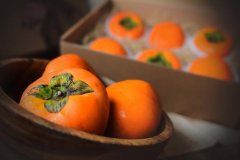What are the causes of the main diseases of grape? Control methods of grape diseases and insect pests
What are the ecological causes of the main diseases of grape?

The occurrence period of each major grape disease is different. In addition to understanding its occurrence period, it is necessary to understand the optimal incidence environment of individual diseases, such as the occurrence period of grape dew fungus in Taiwan is from May to November. When the continuous rainfall in the plum rain season and typhoon season is the most suitable for the occurrence of dew mycosis, once it occurs, the pathogen propagates rapidly and spreads rapidly with the wind and rain, and then seriously occurs.
Among the main diseases of grape, the host specificity of exposure fungus, rust and powdery mildew is strong, and the same diseases of other crops will not be transmitted to each other, while the late rot pathogen has a wide host range and can infect each other with the same diseases of other crops. Grape is a perennial deciduous fruit tree, during the period of defoliation, pathogens are most likely to exist on crop branches, ground withered branches, fallen leaves and fallen fruit, and the residual site of the pathogen is the source of the first infection in the next stage. therefore, the cut branches, fallen leaves and fallen fruits should be cleared out of the garden and burned in the shortest period, and the whole garden can be disinfected with wide-acting pesticides to remove the pathogens latent in the branches and branches of crops and the garden. Reduce the density of the first infection source in the field in order to reduce the cost of follow-up control.
Grape disease control
The prevention and control of grape diseases includes pesticide and non-pesticide control. in the aspect of pesticide control, the plant protection manual and the standard table of safety tolerance for pesticide residues (small berries) announced by the Department of Health can be used to understand which pesticides can be used on grapes. When there are multiple pesticides to choose from, we should pay attention to the nature of pesticides (protective or therapeutic) and choose pesticides with different action mechanisms to use alternately. In order to avoid the occurrence of drug resistance, pay attention to the safe harvest period after use. In the aspect of non-pesticide control, such as using phosphorous acid to control botrytis, making grapes in the first phase of Taiwan and spraying 500 times phosphorous acid solution once a week can effectively prevent the occurrence of botrytis without exposure fungus pesticides at all. and it will not have a negative effect on the quality of grape fruit. Fruit bagging is a common non-pesticide prevention and control method for grapes, which can block diseases and insect pests and prevent the formation of drug spots. After bagging, the fruit string can be isolated from the outside world to avoid the invasion and infection of diseases and insect pests endangering the fruit, and when spraying pesticides after bagging, there will be no residual drug spots on the fruit, so the selectivity of pesticides is greater, and the occurrence of pesticide residues is greatly reduced.
- Prev

Is kiwifruit the same as kiwifruit? is it a fruit? What's the difference between kiwifruit and kiwifruit?
Some people say that kiwi fruit is walnut, but it is called differently. Is that really the case? If it is not the same kind of fruit, what is the difference between them? Is kiwifruit kiwifruit? No. Kiwifruit and kiwifruit both in shape and color
- Next

Persimmon planting technique: what is the special growth characteristic of sweet persimmon seedlings?
Do you know what are the special characteristics of sweet persimmon? If you want to know, let's take a look. First, the selectivity of rootstocks is relatively strict: according to the rootstocks commonly used in Taiwan, Jiro has better affinity, rich is worse, and Yusuo series is even worse, about
Related
- Fuxing push coffee new agricultural production and marketing class: lack of small-scale processing plants
- Jujube rice field leisure farm deep ploughing Yilan for five years to create a space for organic food and play
- Nongyu Farm-A trial of organic papaya for brave women with advanced technology
- Four points for attention in the prevention and control of diseases and insect pests of edible fungi
- How to add nutrient solution to Edible Fungi
- Is there any good way to control edible fungus mites?
- Open Inoculation Technology of Edible Fungi
- Is there any clever way to use fertilizer for edible fungus in winter?
- What agents are used to kill the pathogens of edible fungi in the mushroom shed?
- Rapid drying of Edible Fungi

